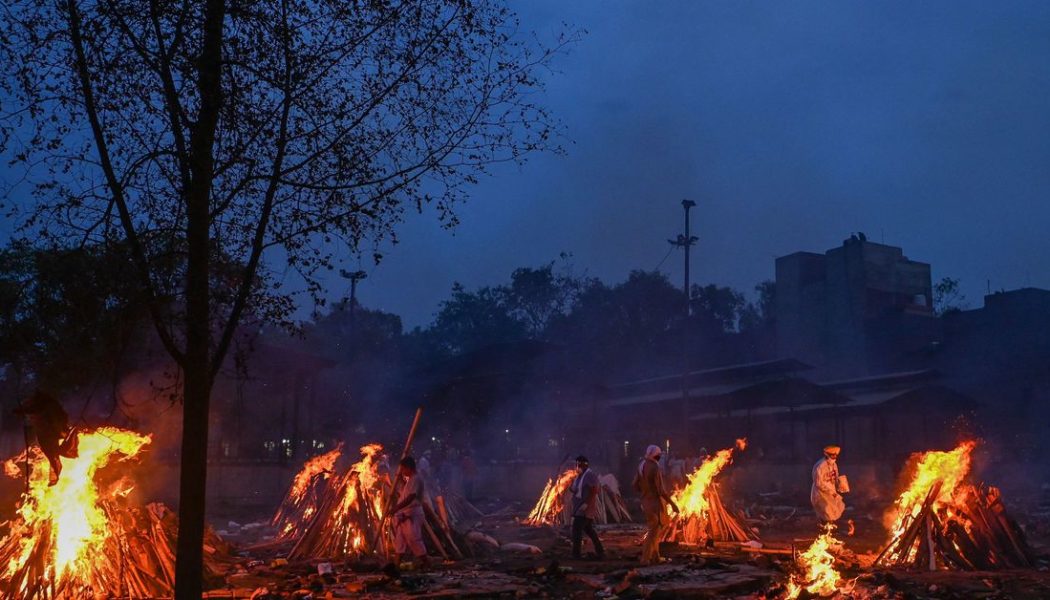
This pandemic has taken millions of lives around the world — and researchers are realizing that the true death toll may be much higher than the official numbers we see every day.
As of May 3rd, the death toll in the US officially stood at 574,043, but a new analysis published this week by the Institute for Health Metrics and Evaluation (IHME) estimates that the actual toll is 905,289. IHME is a health research center based at the University of Washington that specializes in measuring global health on a population level. Its new analysis estimates that the global death toll due to COVID-19 stands at 6.93 million, not 3.24 million.
The key word here is “estimate.” The researchers looked at countries around the world that reported deaths on a weekly or monthly basis. They compared that with COVID-19 testing data and many other variables to build a computer model that could estimate the death toll from COVID-19, taking into account that people died of other causes. Using that method, they found that almost every country was undercounting their deaths due to the pandemic and that their actual death tolls were much higher.
That lines up with other analyses from around the world that have found that some areas are drastically undercounting their COVID dead. But it’s also important to note that not everyone agrees with the shockingly high numbers found in the new analysis. Other studies into excess deaths have found much lower totals.
“Their estimate of excess deaths is enormous and inconsistent with our research and others,” Steven Woolf told NPR’s Becky Sullivan. Woolf led a study that found that excess deaths in the US were around 20 percent higher than they should have been. “There are a lot of assumptions and educated guesses built into their model.”
The problem isn’t unique to deaths. Back in April 2020, Nicole Wetsman wrote about how it’s impossible for us to track every case of COVID-19. That’s still true. Public health officials can only track the people who notice symptoms or seek out treatment or testing. And that’s in places where treatments or testing is available, which isn’t the case everywhere.
It’s always hard to count every case and even every death in any large outbreak, much less a pandemic. People aren’t perfect record-keepers, even when it comes to life and death. Often, our records come down to what the person writing thought was important — and whether they happened to record that information in a way that future generations could understand. Historians are still arguing over the death toll for the Black Plague, which killed anywhere from 25 million to 200 million people, depending on who you ask.
Things got a little better last century when we were wrestling with the 1918 flu. The US did keep tabs on deaths throughout the states — well, most of them. Mortality statistics in 1918 were only gathered for 31 “registration” states that represented about 75 percent of the population at the time, according to a fascinating blog in Health Affairs. To get the estimated death toll, they took the death tolls in the registration states and just added 25 percent to the total. But the population in those registration states wasn’t exactly the same as the population of the rest of the country. People in registration states were more likely to be white and live in urban areas than people living in non-registration states. 1918’s estimate was certainly better than the information that we have for the Black Plague, but it’s not a full picture of that death toll either.
Today, we gather a lot more data, but we’re still not perfect. That’s why it’s taking models to estimate the still-growing toll of the pandemic. Not everyone who dies gets tested for COVID, and in some parts of the world, testing and treatments remain inconsistent. Even the dead we know about slip through the cracks. In New York, refrigerated trucks are still being used to hold people who have died of COVID as they await burial.
Tracking a slow-rolling disaster like a pandemic is brutally hard. It means looking at the names and birthdates and death dates and adding all those lives together into a faceless number too big for our brains to wrestle with. It can feel easier to push it away and wrestle with the things we can control instead and just let the numbers pile up uncounted, shoved in a cold truck on a pier.
But ignoring the costs and accepting our statistical shortcomings won’t help us in the long run. A more accurate accounting of our dead might help people understand more about how this disease can overtake our defenses.
“We need to better understand the impact of COVID across the globe so that countries can understand the trajectory of the pandemic and figure out where to deploy additional resources, like testing supplies and vaccines to stop the spread,” epidemiologist Jennifer Nuzzo told NPR.
Maybe — just maybe — we can learn from our mistakes — or at the very least, maybe we can stop making the same ones over and over.
Research
As the Covid-19 crisis ebbs in the U.S., experts brace for some to experience psychological fallout
One of the side effects of the pandemic has been people’s mental health (see below). But experts are also bracing for a new set of problems that may hit when the pandemic ends. (Andrew Joseph / STAT)
If Your Brain Feels Foggy And You’re Tired All The Time, You’re Not Alone
The trauma of the pandemic has caused a lot of people to struggle with feelings of exhaustion and “brain fog.” Here are a few reasons why — and how people feeling fatigue can cope. (Rhitu Chatterjee / NPR)
We reviewed three at-home covid tests. The results were mixed.
You can now get a COVID-19 test at home. But should you? MIT Tech Review took a look at three to find out how well they worked. (Antonio Regalado / MIT Tech Review)
Development
US supports lifting patent protections on COVID-19 vaccines
In an about-face, the Biden administration has decided to support an effort to lift patent protections on vaccines. Advocates have pushed for the move as a way to increase vaccine supplies, especially in developing countries. (Mary Beth Griggs / The Verge)
China’s Vaccine Diplomacy Just Got a Big Win. But Can the Country Deliver?
On Friday, the WHO approved Sinopharm, a COVID-19 vaccine developed in China for emergency use. It could increase the availability of shots in places where it is desperately needed. (Sui-Lee Wee / The New York Times)
Pfizer, BioNTech ask FDA for full approval of COVID-19 vaccine
Pfizer and BioNTech have formally asked the FDA to fully approve their COVID-19 vaccine. We won’t know the FDA’s decision for some time. But if the approval goes through, it would be the first vaccine to reach that milestone. (Erika Edwards / NBC News)
More than numbers
To the people who have received the 1.24 billion vaccine doses distributed so far — thank you.
To the more than 156,305,852 people worldwide who have tested positive, may your road to recovery be smooth.
To the families and friends of the more than 3,260,511 people who have died worldwide — at least 580,574 of those in the US — your loved ones are not forgotten.
Stay safe, everyone.










